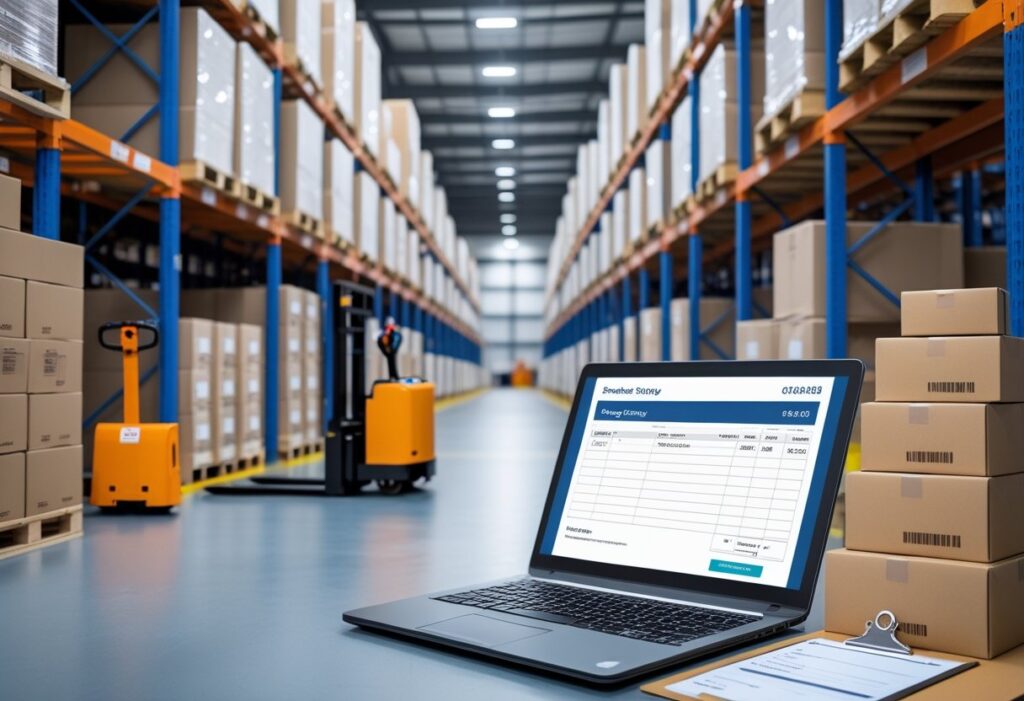When I first jumped into Amazon FBA, I had no idea that wholesale arbitrage would be the thing to turn my side hustle into something steady and real. Instead of chasing clearance racks for random deals, you start working directly with wholesale suppliers—buying branded products in bulk, usually at much lower prices.
That means you get a consistent flow of inventory, more predictable margins, and you’re not always on the hamster wheel of hunting bargains.

To source products, I spend time researching what’s actually selling on Amazon. I’ll check sales rank and look for brands that have healthy competition but not so much that you’ll get buried.
Trade shows, wholesale directories, and just reaching out to manufacturers have all worked for me. Once you find a potential supplier, you’ve got to vet them—make sure they’re reliable, that the products are legit, and that you can negotiate a price that leaves enough meat on the bone after Amazon’s fees.
The best part? When you land a good supplier, you can reorder those products again and again. You’re not starting from scratch every month.
With Amazon FBA handling storage, packing, and shipping, you get to focus on finding more winners and building those supplier relationships. That’s where the scaling really happens.
Key Takeaways
- Buy branded products in bulk from trusted suppliers for steady inventory.
- Research demand, margins, and competition before pulling the trigger on a product.
- Build strong supplier relationships—better pricing and growth follow from there.
Retail Arbitrage vs. Wholesale Arbitrage – Key Differences
Honestly, I dipped my toes into retail arbitrage first. It’s easy to start—just grab discounted stuff from local stores or online, flip it on Amazon, and pocket the difference.
It works, but there’s a ceiling. You’re spending a lot of time hunting for deals, and good luck finding the same product twice.
With wholesale arbitrage, you’re buying in bulk from legit distributors or manufacturers. That means steadier stock, better pricing, and you’re not glued to your phone checking for new deals every day.
Here’s a quick side-by-side look:
| Factor | Retail Arbitrage | Wholesale Arbitrage |
|---|---|---|
| Startup Cost | Low | Higher |
| Inventory Source | Retail stores, online shops | Distributors, manufacturers |
| Stock Consistency | Unreliable | Reliable |
| Scalability | Limited | High |
| Profit Margins | Lower | Often higher |
| Time Spent Sourcing | High | Lower |
Retail arbitrage is honestly a great way to get your feet wet. You don’t need much cash, and you learn the ropes fast.
But man, it’s a grind—always searching for new stuff, never sure if you’ll find more of the same product.
Wholesale arbitrage takes more capital up front, but you can keep ordering what sells. That frees you up to actually grow your business, not just chase inventory.
For me, the real game-changer was control. With wholesale, I can actually plan ahead, manage my supply, and set prices with more confidence. That’s a big deal if you want to build something that lasts.
How to Find Reliable Wholesale Suppliers
When I got started with wholesale, I realized fast—your supplier is everything. The right partner means you’re not worrying about stockouts or getting burned on price.
I usually reach out to brands first, just asking for their authorized distributors. This works for electronics, home goods, even weird niche stuff.
If the brand won’t sell to me, no problem—I just ask for a distributor list and go from there.
Wholesale directories help too. Sites like ThomasNet or Wholesale Central are a decent starting point, but I always double-check that I’m not just dealing with a retailer in disguise.
Trade shows? Absolute gold. Meeting people face to face helps build trust, and you can sometimes score deals on bulk or discounted products that you’d never find online.
I’ve even stumbled on clearance items at shows that flew off the shelves on Amazon.
Here’s my quick checklist before I ever send money:
| Step | What I Check | Why It Matters |
|---|---|---|
| Verify business license | Confirms legitimacy | Avoids scams |
| Check product range | Matches my sourcing goals | Saves time |
| Request price list | Compare with Amazon prices | Ensures profit margin |
| Test small order | Check quality & shipping | Reduces risk |
I try to keep communication friendly but professional. Over time, that’s led to better pricing and even early dibs on hot stock.
Vetting Suppliers for Profitability and Trustworthiness
When I’m looking at a new supplier, I care about two things: profit margins and reliability. Great prices are useless if the supplier flakes or ships junk.
First, I check their business credentials. I want to see a business license, a tax ID, and proof they’re actually authorized to sell what they say.
If someone dodges those questions, I’m out. No product is worth that headache.
Next, I compare their prices to what’s going on Amazon right now. I factor in Amazon fees, shipping, prep—everything. I’m usually aiming for at least 30% ROI once all’s said and done.
Here’s my go-to checklist:
| Checkpoint | Why It Matters |
|---|---|
| Business license | Confirms legitimacy |
| Product authenticity proof | Avoids counterfeit issues |
| Order minimums | Ensures volume fits my budget |
| Communication speed | Predicts future support |
| Return/replacement policy | Reduces risk on defects |
I always ask for samples before going big. You can’t beat seeing the product in person, checking packaging, and making sure it’ll pass Amazon’s checks.
I pay close attention to how suppliers communicate. If they’re clear, fast, and straight with me, that’s a good sign. But if they dodge questions or push for fast payment without paperwork? Nope, not worth it.
Negotiating Prices and Building Long-Term Relationships

When I reach out to a new supplier, I’m not just gunning for the lowest price. I actually want to understand their business, their margins, and what keeps them up at night. That way, we can work out terms that make sense for both of us.
I’ve found that how you talk matters. I try to listen more than I talk, ask questions that get them to open up, and make it clear I’m in it for the long haul—not just a quick flip.
Some tactics that have worked for me:
- Buy in bulk when possible to unlock better pricing.
- Pay promptly—sometimes even upfront—to get better terms.
- Offer flexibility on delivery times if it helps them out.
- Reference competitor pricing (but only if it’s actually fair).
I keep a simple table to track supplier offers, so I know where I stand when it’s time to negotiate:
| Supplier | Unit Price | Min Order Qty | Payment Terms | Notes |
|---|---|---|---|---|
| A | $4.20 | 200 units | Net 30 | Fast shipping |
| B | $3.95 | 300 units | Upfront | Limited stock |
When suppliers see you’re organized and professional, they’re way more likely to give you a break on price. I’d say in wholesale arbitrage, those relationships are sometimes worth more than the products themselves.
Understanding Amazon Category Gating and Restrictions

When I first started selling wholesale on Amazon, I was surprised to find that not every product was fair game. Some categories and brands are gated, which means you’ll need Amazon’s blessing before you can list them.
Amazon puts these gates in place to protect customers, keep quality up, and cut down on counterfeits. If you try to sneak a gated product onto the marketplace without approval, you’ll hit a wall—your listing gets blocked, and your account might even get flagged.
Common gated categories include:
- Jewelry
- Grocery & Gourmet Food
- Watches
- Dietary Supplements
- Automotive & Powersports
To get the green light, Amazon might want:
- Invoices from an authorized distributor (usually 10+ units).
- Product photos that show packaging and labels.
- Compliance documents for regulated stuff.
Some categories let you auto-ungate if your account’s got a solid track record or meets certain sales milestones. Not every gate is locked tight.
Here’s a quick example of gated vs. ungated:
| Status | Example Categories | Notes |
|---|---|---|
| Gated | Fine Jewelry, Alcohol | Approval required |
| Ungated | Books, Home & Kitchen | Most products open to new sellers |
Before buying wholesale inventory, I always double-check if the product’s gated in my Seller Central account. Saves me from buying stock I can’t even list.
Prepping and Shipping Wholesale Products to FBA
When I send wholesale products to Amazon FBA, I get picky about packaging. Amazon’s prep rules are strict, but following them saves me headaches and surprise fees later.
I check if items need poly bags, bubble wrap, or tape. Liquids get sealed and bagged, and anything breakable gets extra padding—no shortcuts here.
Before I box anything up, every single unit gets an FNSKU label or, if it qualifies, the manufacturer barcode. Mixing SKUs in the same box? Nope, not unless everything’s labeled right.
Here’s my quick FBA prep checklist:
| Step | Task | Notes |
|---|---|---|
| 1 | Inspect products | Remove damaged or defective units |
| 2 | Apply labels | Ensure barcodes are scannable |
| 3 | Add protective packaging | Match Amazon’s prep requirements |
| 4 | Pack boxes | Keep weight under Amazon’s limits |
| 5 | Create shipment plan | Use Seller Central to set destinations |
| 6 | Ship | Choose a trusted carrier or Amazon Partnered Carrier |
When packing, I stick to Amazon’s 50 lb weight limit—unless I’m dealing with a single heavy item. Oversized boxes? Only if there’s no other way.
Once my shipment plan’s ready, I print the box labels and slap them on the outside so they’re easy to scan. Then I set up pickup or drop-off with my carrier.
Scaling Your Wholesale Arbitrage Business
In the early days, all I cared about was finding stuff that sold. But if you want to scale, you’ve got to build systems so you’re not stuck doing every little thing yourself.
I keep tabs on key metrics like sales, profit margins, and inventory turnover. Those numbers tell me what’s working and what’s just clogging up space.
To keep options open, I hit up trade shows, poke around wholesale directories, and ask my current suppliers if they know anyone else. More suppliers means more choices and better deals—usually.
I try to reinvest a chunk of my profits right back into inventory. That helps me grab bigger orders and sometimes unlock better bulk discounts.
Here’s a simple breakdown of areas I focus on when scaling:
| Area | Action Step | Benefit |
|---|---|---|
| Suppliers | Add 1–2 new vetted suppliers each month | More product variety |
| Inventory | Increase top product stock levels | Reduce out-of-stock issues |
| Tools | Use software for repricing & research | Save time and improve accuracy |
| Outsourcing | Hire help for prep and shipping tasks | Free up time for sourcing |
I also pay close attention to Amazon’s rules. A suspension can wipe out months of progress, so I keep up with policy changes and keep my account in good shape.
Common Mistakes to Avoid
When I jumped into wholesale arbitrage, I made plenty of rookie mistakes. If you can dodge these, you’ll save yourself a lot of headaches.
One big one: skipping detailed deal analysis. Guessing about demand or profits? That’s a shortcut to losing money. I always use an ROI calculator and check real sales data before I buy.
Another: bad profit calculation. If you forget to factor in Amazon’s fees, shipping, or prep costs, your profits look way better than they actually are. I double-check the math every time.
Some folks trust suppliers without vetting them. I always check reviews, ask for references, and start with a small test order. That filters out most of the sketchy ones.
It’s also easy to overestimate sales velocity. Just because a product’s ranking high today doesn’t mean it’ll move fast next month. I look at historical data, not just snapshots.
Here’s a quick table I use to keep myself in check:
| Mistake | Better Approach |
|---|---|
| Skipping deal analysis | Use ROI calculators and sales history |
| Ignoring hidden costs | Include all fees in profit calculation |
| Not vetting suppliers | Request references and test orders |
| Overestimating demand | Check long-term sales trends |
I also try not to buy too much too soon. Growing fast sounds great, but I’d rather take it slow than end up with a garage full of unsellable stuff.
Final Thoughts and Action Steps
If I had to sum it up, I’d say: start small, but keep your eyes on the long term. You don’t need a dozen suppliers right away—just one good one and a product that actually moves.
Here’s a quick checklist I use when moving forward:
| Step | Action |
|---|---|
| 1 | Open or upgrade your Amazon Seller account with FBA enabled |
| 2 | Research products with steady demand and manageable competition |
| 3 | Contact multiple suppliers and request price lists |
| 4 | Compare wholesale costs against Amazon selling prices |
| 5 | Place a small test order before committing to bulk |
I try to keep my first orders small enough to limit risk, but big enough to actually test demand. No sense tying up all my cash right out of the gate.
When reaching out to suppliers, being polite and straightforward goes a long way. Good relationships can lead to better prices and first dibs on new stock.
I keep my prep process as simple as I can. Whether I’m doing it myself or using a service, every product needs to hit Amazon’s packaging and labeling rules—no exceptions.
And I keep an eye on my numbers. Every week, I check sales, fees, and profit margins so I can adjust prices, reorder on time, or drop slow movers before they become dead weight.
If you take it one step at a time and focus on building solid systems, wholesale arbitrage can turn into a business that actually fits your life—not the other way around.
Frequently Asked Questions
Honestly, wholesale arbitrage isn’t just about finding products. It’s about understanding the model, building real supplier relationships, sticking to Amazon’s rules, and sidestepping the classic mistakes. There’s a lot of number crunching and system building, too.
What exactly is wholesale arbitrage and how does it differ from retail arbitrage?
Wholesale arbitrage is buying bulk from legit wholesalers or distributors and flipping those products on Amazon for a profit.
Retail arbitrage is more about hunting deals in retail stores—think clearance racks—and reselling online. Wholesale’s usually easier to scale and you can get more consistent inventory than chasing retail sales.
Can you explain the process of sourcing products for wholesale arbitrage?
I start by hunting for brands or categories with steady demand and decent sales ranks on Amazon.
Then I reach out to authorized wholesalers or distributors to see if I can get bulk pricing that leaves room for profit after Amazon takes its cut.
How do I find and properly assess wholesale suppliers for Amazon FBA?
I dig through trade directories, hit up industry events, and check brand websites to find real suppliers.
Before I buy, I check their business credentials, ask for references, and make sure their invoices will fly with Amazon’s requirements.
What are some effective strategies for negotiating prices with wholesalers?
I usually start by asking about volume discounts and minimum order sizes.
If you build a relationship and show you’re a repeat buyer, you’ll often get better deals over time.
What are Amazon’s specific requirements for products sold through wholesale arbitrage?
Amazon wants authentic, new-condition products from reputable sources.
Invoices need to clearly show the supplier’s info and match what you’re selling. And for some brands, you’ll need their approval before listing.
What are the common pitfalls in wholesale arbitrage I should be aware of to ensure long-term success?
One big mistake? Stocking up on loads of inventory before you’re really sure people want it. That can leave you stuck with slow sales and those annoying storage fees piling up.
There’s also the risk of teaming up with suppliers you haven’t properly checked out. If their products turn out to be fake or not authentic, your account could get flagged, and that’s a headache nobody needs.


